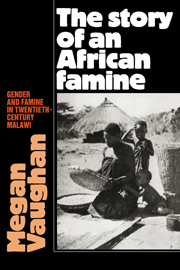Book contents
- Frontmatter
- Contents
- List of maps
- List of illustrations
- Preface
- Glossary
- Introduction
- 1 The 1949 famine
- 2 Famine as a Malthusian crisis
- 3 Famine as a failure of the market
- 4 Food entitlement and employment
- 5 Gender and famine
- 6 After the famine: a conclusion
- Notes
- List of oral interviews
- Bibliography
- Index
3 - Famine as a failure of the market
Published online by Cambridge University Press: 05 November 2009
- Frontmatter
- Contents
- List of maps
- List of illustrations
- Preface
- Glossary
- Introduction
- 1 The 1949 famine
- 2 Famine as a Malthusian crisis
- 3 Famine as a failure of the market
- 4 Food entitlement and employment
- 5 Gender and famine
- 6 After the famine: a conclusion
- Notes
- List of oral interviews
- Bibliography
- Index
Summary
Although the theory of Malthusian crisis was the most influential in explaining the 1949 famine, there were two other theories (quite closely related to one another) which were put forward by European observers and expounded at length in the planters' newspaper,the Nyasaland Times. One held that the famine was due to a shortfall in maize production nationally, and that this could be accounted for by the high tobacco prices of the post-war period and the consequent shift into tobacco production on the part of many African farmers. This shift was seen to be at the direct expense of food production. The second theory also saw a shortfall in maize surplus production as being responsible, in this case caused by inappropriate government intervention in the marketing of foodstuffs. Over a period, it was argued, this had had an inhibiting effect on production, village food stocks had been run down, and one bad season was enough to topple the country into disaster. Sometimes one or other of these explanations was used alone, sometimes in combination with each other or with the Malthusian theory. Both were critical of government policies on African agriculture, and both relate to wider debates outlined in the Introduction. In this chapter I discuss the two theories and assess their relevance to the analysis of the famine.
A positive aspect of both these theories is that they treated the events of the famine in the context of an economy wider than that of the local area in which the famine struck.
- Type
- Chapter
- Information
- The Story of an African FamineGender and Famine in Twentieth-Century Malawi, pp. 77 - 101Publisher: Cambridge University PressPrint publication year: 1987



